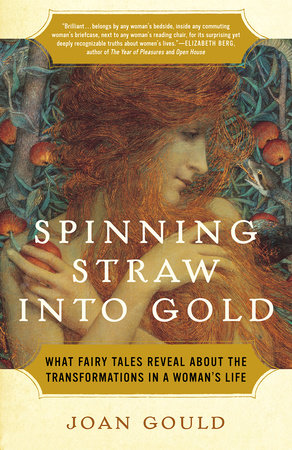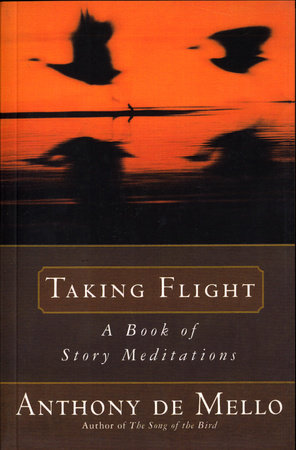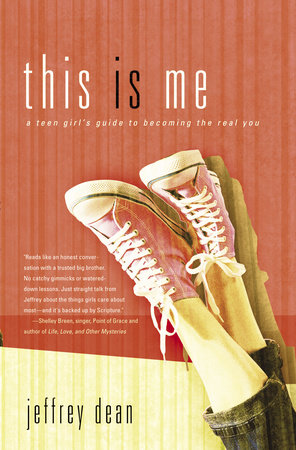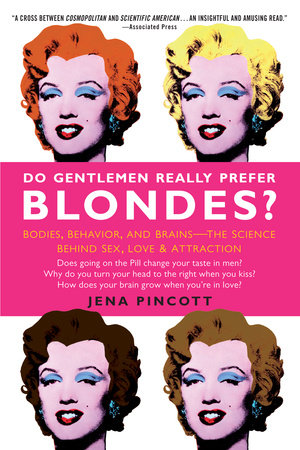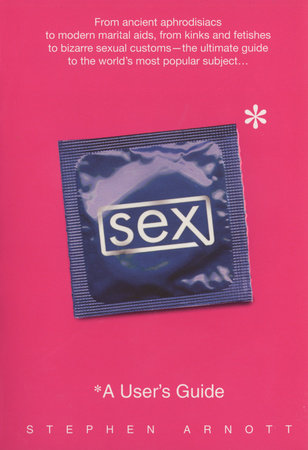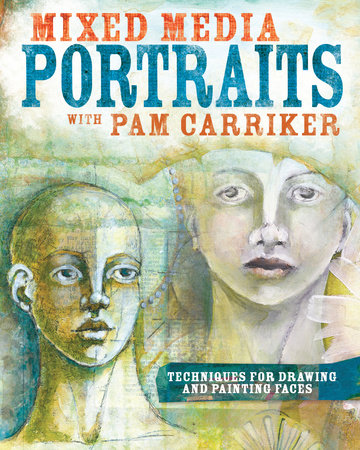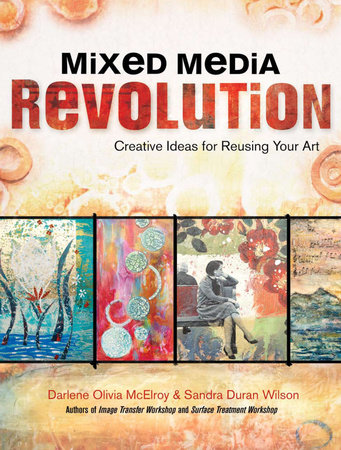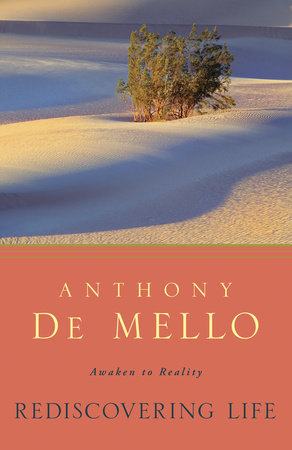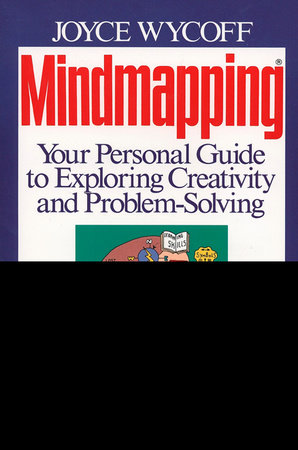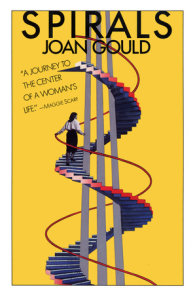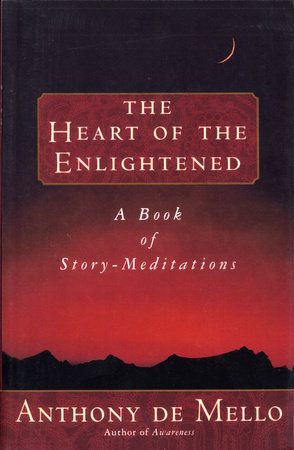Author Q&A
RH: Joan, I’m curious to know what aroused your interest in old stories. What was the genesis of SPINNING STRAW INTO GOLD? And how long have you been working on it?
In one sense, I’ve been sitting in front of a computer and working on this book for 12 years, but it’s been on my mind for 60 years.
During my first year at college, when I was 16, the university awarded a prize for the best term paper by a freshman — a very big deal at the time. I told my adviser that I’d been struck by similarities between heroes in classic myths and modern comic books. Superman, for instance (who had appeared only 15 years earlier) is sent to our world from the doomed planed Krypton in a rocket ship, to be found and raised by foster parents, just as the infant Moses was rescued from the Egyptians by being put into an ark made of reeds and floated downriver where the Pharaoh’s daughter found him.
“No way,” said my adviser. I could write on that subject if I insisted, but I’d never win the prize. Why wouldn’t I write about Virginia Woolf instead?
He was right. I didn’t win the prize. It went to a girl who wrote about Virginia Woolf. But the notion that our favorite stories can change name and setting while their meaning remains intact, stayed with me from then on.
RH: The first sentence I see when I open your book is “What’s your favorite fairy tale?” What’s the point of such a question?
This may sound like a parlor game – but naming a story on the spur of the moment can be a clue to our family background and our inner selves. The choice will change from one period in our lives to another, even from day to day.
Ten women who say that “Cinderella” is their favorite story may be thinking of ten different aspects: the heroine’s sense of being excluded from the family group, for instance; the humiliation of looking so much shabbier than her sisters (or friends); her rivalry with those sisters; or perhaps her problems with her step/mother, who could actually be her own mother as seen through a resentful teenager’s eyes.
Those who choose “Snow White” may be thinking of the scenes with the dwarfs as they appear in the Walt Disney movie — hi ho, hi ho — while Snow White plays the perfect den mother, hands on her hips, tenderly correcting their manners and insisting that they wash their hands. It’s an appealing picture of motherliness.
Another woman may remember the same story as a mother-daughter duel, starting with a mother, still beautiful and sexual, who realizes that her daughter is approaching womanhood and will soon become a Queen in her own right. The step/mother may not be jealous of the girl’s beauty — that’s a fairytale metaphor — but of the youth that’s still hers to spend, the beauty of lovers and babies and homes not yet known, the doors open for her daughter that were never open for her.
RH: Joan, you say that on the surface this is a book about fairy tales, but at a deeper level it deals with transformation. I’m not sure what you mean by “transformation”, or what it has to do with bedtime stories for children.
By “transformation” I mean those shifts in levels of being that come over us from time to time and leave us wondering how we got to where we are today. We are born to be changed, the stories tell us. We are always on the move from one stage to the next, whether we want to be transformed or not. This is why so many of our favorite tales focus on girls and women, with their built-in and obvious metamorphoses, rather than boys and men.
RH: Could you give some everyday examples?
A girl is a child before puberty and a woman afterwards. This is the story of Cinderella, who changes from a scullery maid into a Princess; Sleeping Beauty, who bleeds when pricked by a spindle; and the Seal Maidens who swim to shore on certain nights and slip out of their animal skins to reveal their beautiful legs.
A woman is one person before she has sexual contact with a male, and more alive or less alive later on. (Beauty is more alive when she recognizes her love for the Beast. Daphne is less alive when she changes into a tree in order to avoid being raped by Apollo.) Marriage is another transformation that splits a woman in two. In one part, she’s herself; in the other part, she’s half of a couple (“The White Bride and the Black Bride”, “The Seal Wife”). A woman is transformed when she’s pregnant and again when she becomes a mother. Menopause is a generally unwelcome transformation, signaling age, but becoming a grandmother teaches continuity and difference.
One thing transformation is not: It’s not a magic wand that changes a poor girl’s rags to riches, or treats her to an Extreme Makeover, which is external. Real transformation involves rising or falling from one level of consciousness to another, usually after a dark period of suffering or sleep.
RH: Do you see “Cinderella” as the drama that all girls go through at puberty?
No, “Cinderella” is just one account — though it’s the most popular – of this transformation.
We never get tired of the basic plot: Jane Eyre, Harry Potter, “The Ugly Duckling” and A Little Princess are of superior birth who suffer miserably as adolescents, but outstrip their oppressors in the end. Heroines in My Fair Lady and Pretty Woman are taught what to know in order to shine in society.
RH: Joan, we’ve all heard charges from feminists that the old fairy tales aren’t helpful to girls because the heroines seem to do nothing but lie around and mope until a Prince comes along to save them. What do you think about this?
The idea that fairytale heroines are passive creatures who wait to be rescued is a twentieth century notion that’s out-and-out wrong. Sisters rescue brothers in fairy tales much more often than brothers save sisters. Daughters rescue fathers or lovers rather than the reverse.
Beauty goes into the Beast’s castle, prepared to die in order to save her father. Hansel scatters bread crumbs to mark the way out of the woods (men like to serve as pathfinders), but it’s Gretel who pushes the witch into her own oven.
Cinderella is supposed to be the most passive heroine of all, waiting to be rescued from the ashes. Then why does she run away from the Prince three times in the German version, after dancing with him at the ball?
No, it’s not fairytale heroines who are passive victims. It’s the heroines of the Walt Disney movies, especially the earlier ones, who warble and weep on the sidelines and then accept rescue by a Prince in place of transformation.
RH: Can we still appreciate “Beauty and the Beast” stories in our culture that treats sex so casually, almost as a curriculum requirement in college?
If you look closely, you’ll see that our most popular romantic books, movies and plays turn out to be “Beauty and the Beast” with different trappings.
King Kong, the gorilla-god of his island, holds Fay Wray on the palm of his hand and plucks off the layers of her skirt as if plucking the petals off a rose, with a bemused expression on his face.
But in general, the Beast is seen as a human being, a romantic figure isolated in his private wilderness, more powerful than his civilized counterparts but misunderstood and wracked by loneliness:
The Phantom of the Opera hides behind his mask in his watery lair beneath the Paris Opera House, yearning for the young singer he transforms into a star.
Edward Rochester (in Jane Eyre), Heathcliff (in Wuthering Heights) and Rick of Rick’s Cafe (Humphrey Bogart, in Casablanca), like the skipper of The African Queen (Bogart again) are Beast-men who hide behind their ferocious scowls until tamed by a heroine from the civilized world.
In each story, the isolated Beast is devoted to the one woman who dares enter his domain. His opposite number is the Hero, who’s applauded by society, so that he’s not so evidently in need of love. In our terms, the Hero is a career man who’ll make his way up the corporate ladder; he’ll be able to support a wife and children.
RH: Then how is a woman supposed to decide which she wants — the Hero or the Beast?
Every woman should have three mates, said anthropologist Margaret Mead: The first for sex. The second for parenthood. And the third and last, when child-rearing is done, for companionship.
RH: Why do all fairy tales have to end the same way? “Happily Ever After”
They don’t. In fact, I’ve divided this book into the three phases of a woman’s life, maiden, matron and crone.
The Maiden’s story — I call it “The Age of Attraction” – begins with puberty and ends with love, marriage and motherhood, because that’s the way we keep the species going.
On the Maiden’s wedding day the Matron’s story begins — I call that phase “The Age of Attachment” – entirely different from the Maiden’s but just as full of trials and triumphs.
The final phase of a woman’s life is the Crone, “The Age of the Spirit”, which is the most challenging, giving us the chance to see ourselves in the clear, sharp light of mortality.
RH: I’m not sure that I remember certain fairy tales in detail, only the Disney movies.
I re-tell the old stories for just that reason. Walt Disney is the leading myth-maker of our time, to such an extent that his movies and books are the only version of the stories that most people know. The Disney patriarchal slant is what feminists object to, without realizing it, when they claim that heroines are passive.
Disney changes what used to be the heroine’s story of growth and transformation — in other words, nature magic – into the hero’s story of conflict: good against evil, youth against age, masculine courage against the trickiness and cruelty of old witches. In Disney’s kingdom, the hero is present from the first reel, infatuating the heroine and ultimately saving her. In traditional stories, he doesn’t appear until the end, and then chiefly as a sign of the girl’s new maturity. He’s a sort of graduation present.
With Disney, the heroine isn’t transformed; she’s rescued. The hero becomes the agent of change.
Of course, 65 years have passed since the first full-length Disney fairy tale film, and themes have changed to suit the times, especially in the new Beauty and the Beast, but the old movies are revived for each generation.
RH: Did you keep your own children away from the Disney fairytale movies?
Of course not. No one should be deprived of a chance to see the dwarfs marching off to the mines — “We whistle while we work” – or the squirrels cleaning house by sweeping the dust under the rug with their tails. Disney movies are an entertainment form all their own.
But Disney isn’t enough. His movies and simplified fairytale books teach us nothing about the mysterious pain and transcendence involved in growing up. For that, we need the old stories in their traditional form, especially Grimms and Perrault.
RH: One of the main themes in Spinning Straw is the idea that “females are the vehicles of transformation in this world.” Do you think that older women can relate well to younger women today, and vice versa? Do women from each generation confront the same issues, or has society changed so much as to render the experiences very different?
Of course society has changed radically in recent decades, but I think that the changes of the past thirty or forty years have brought the generations closer together rather than further apart. Girls of fifteen have babies, and so do women in their forties, even fifties. Women in their seventies dress like their granddaughters in jeans and sweat shirts, go hiking and camping and have love affairs and divorces. Older women remember how hard it is to work full time, and young women, just starting their careers, look forward to being homemakers as well — as soon as they have the time. The younger generation hasn’t shocked its elders since the 1970’s, now that sexuality has been pretty well divorced from reproduction, and the older generation no longer seems dreary, thanks to improvements in medicine and beauty care. Thirty years old today is what twenty used to be in your mothers’ day; fifty is the former forty.
Even our culture has melded. Because of VCR’s and DVD’s, we’ve all seen I Love Lucy and All About Eve and heard the Beatles sing “Let Me Hold Your Hand”. The past is wrapped up in the present.
RH: Would you have any advice for younger wives and mothers?
Watch. Stay awake. Busy as you are while you’re working and dating, or during the years of child-rearing when it’s a small victory to find the time to brush your teeth, try to be aware of the transformations going on around you and because of you. You bring home packages of pasta and jars of sauce from the grocery story and transform them into supper. The food you serve becomes your family’s flesh. The flesh grows and changes and produces another generation. You transform an embryo into a fetus, a fetus into a baby, an energetic and reckless toddler into a civilized member of society. Before you know it, the child you left at the kindergarten door this morning will be working in his office, too busy to take his mother’s phone calls.
Miracles are passing through you. When you become a Crone (like me), you’ll be surrounded by silence and time, in which you’ll look at young mothers with their children and see the energy — I almost said radiance — streaming from them.
RH: Now it’s your turn, Joan, to tell us – what’s your own favorite fairy tale?
When I was young, I think my favorite was the Greek myth of the goddess Demeter and her daughter Persephone. I thought this was because the pretty girl picking flowers was kidnapped by Hades, King of the Underworld, and became the Queen of the Dead. The mysteries of the spirit world fascinated me.
Then one day, when my mother was old and sick and bitter, and I was telling her this story for lack of anything else to talk about, it occurred to me that I’d never known the real reason for my preference. I was caught by the story of a mother so in love with her daughter, her only child (as I was), that she defied the gods and made the whole world suffer for her loss. This was more than I thought my mother would do for me.
But in recent years I’ve often had “Beauty and the Beast” in mind. For 35 years I was a racing skipper, sailing a small boat on Long Island Sound in calms and storms, without any member of my family on board. (I still sail, but I no longer race.) It seems to me that we’ve lost too much of the wilderness in ourselves as well as our surroundings, so that we have few occasions when we can be fully conscious of our bodies, and can exist inside our bodies, with an occasional jolt of fear to remind us that we are fragile but nonetheless present on the starting line, like our boats.
I tend to admire good male skippers – there were no other females that I know of racing without their husbands when I started – who not only sail and race as I do, but have enough knowledge of aerodynamics to judge the cut of a sail and the rake of a mast, which is beyond me. Often these skippers are dull socially, like “poor Beast”, hot-tempered and difficult, but with rare physical intelligence.
I didn’t choose to marry a Beast, however. I married a landlubber hero who never chose to set foot in a boat, but let me go right on with my racing, and I never wanted anyone else.
